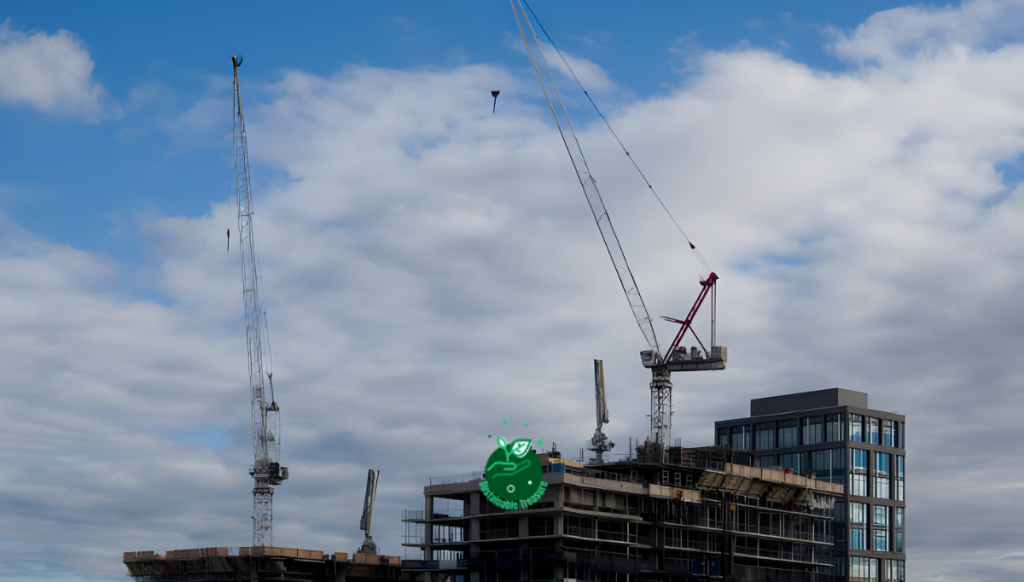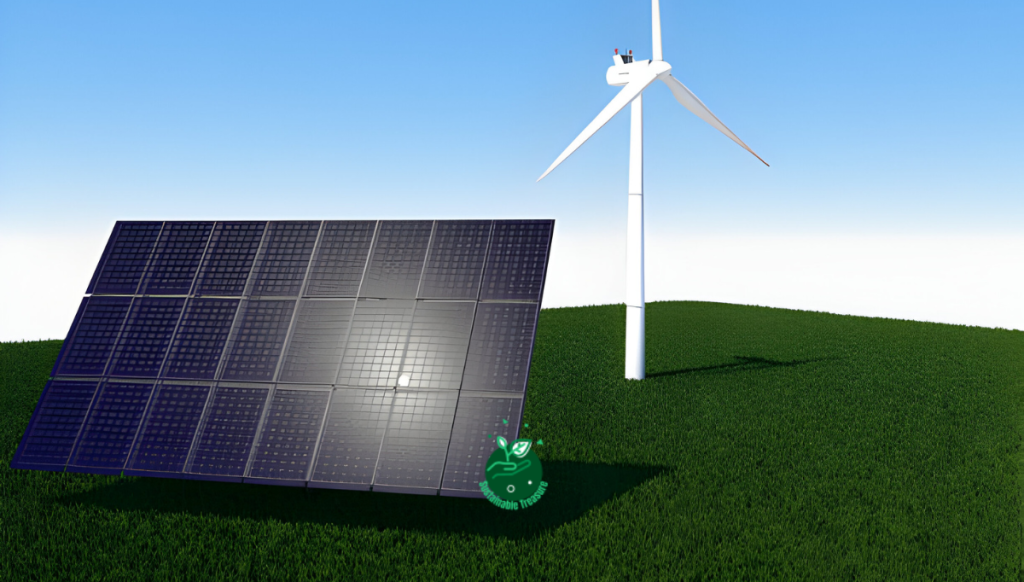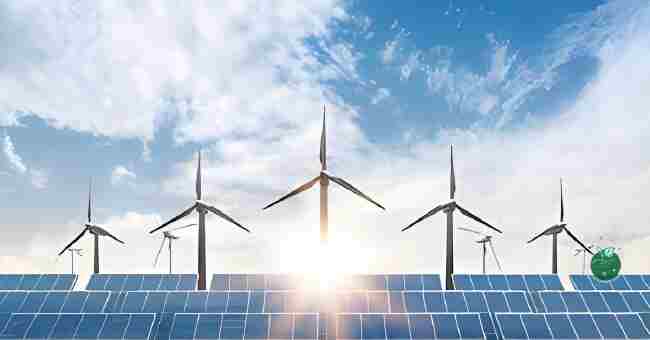Table of Contents
How does climate change and real estate investments are having impact in eachother? Climate change significantly impacts real estate investments by increasing risks and reshaping market demands.
Properties in vulnerable areas, such as coastal regions, face heightened risks of flooding and severe weather events, leading to potential financial losses.
Conversely, the demand for sustainable and energy-efficient buildings is rising as investors seek to mitigate environmental risks and comply with evolving regulations.
I remember when I first considered investing in a coastal property, I was drawn to its beauty and potential returns. However, the increasing frequency of hurricanes and flooding in the area made me reconsider.
Understanding the long-term risks associated with climate change helped me make a more informed decision and look for investments that align with sustainability goals.
In this article, we’ll explore how climate change is reshaping the real estate market and how you can adapt your investment strategy to navigate these challenges and opportunities.
Let’s dive in.
Understanding Climate Change and its Impact on Real Estate Investments

Climate change is a pressing issue that is affecting various aspects of our lives, including the real estate market. As the climate continues to change, it is essential to understand how these changes can impact real estate investments.
In this article, we will explore the relationship between climate change and real estate investments and provide you with insights on how to navigate this evolving landscape.
Rising Sea Levels and Coastal Properties
One of the most significant impacts of climate change on real estate investments is rising sea levels. As sea levels continue to rise due to melting ice caps and glaciers, coastal properties are at risk of being flooded. This can lead to a decline in property values and increased insurance costs for owners.
If you are considering investing in coastal properties, it is crucial to assess the long-term risks associated with rising sea levels and factor them into your investment decisions.
Extreme Weather Events and Property Damage
Another consequence of climate change is the increase in extreme weather events such as hurricanes, wildfires, and droughts. These events can cause significant damage to properties, leading to costly repairs and decreased property values.
Before investing in real estate, consider the vulnerability of the property to extreme weather events and assess the risk of potential damage. Investing in properties with resilient designs and sustainable features can help mitigate the impact of extreme weather events.
Strategies for Climate-Resilient Real Estate Investments
Navigating the impact of climate change on real estate investments requires strategic planning and risk management. By implementing climate-resilient strategies, you can protect your investments and ensure long-term sustainability. Here are some strategies to consider:
Diversifying Your Real Estate Portfolio
Diversification is a key strategy for mitigating risks in real estate investments. By diversifying your portfolio across different property types and geographical locations, you can reduce your exposure to climate-related risks.
Consider investing in properties that are not solely dependent on coastal areas or regions prone to extreme weather events. Diversifying your portfolio can help you spread risk and enhance the resilience of your investments.
Investing in Green Real Estate
Green real estate, also known as sustainable or eco-friendly properties, is a growing trend in the real estate market. These properties are designed to minimize their environmental impact and reduce energy consumption.
Investing in green real estate can not only contribute to environmental sustainability but also increase the value of your investments.
Consider incorporating sustainable features such as solar panels, energy-efficient appliances, and green building materials into your properties to enhance their resilience to climate change.
Conducting Climate Risk Assessments
Before making real estate investments, it is essential to conduct thorough climate risk assessments to evaluate the potential impact of climate change on your properties.
Work with climate scientists, engineers, and risk assessors to identify potential hazards and vulnerabilities that could affect your investments.
By understanding the climate risks associated with your properties, you can develop appropriate mitigation strategies and make informed investment decisions.
Incorporating Climate-Resilient Features into Properties
When investing in real estate, consider incorporating climate-resilient features into your properties to enhance their durability and sustainability.
Here are some key features to consider:
Flood-Resistant Building Materials
Invest in flood-resistant building materials such as concrete, steel, and composite materials to protect your properties from flood damage.
These materials are more durable and resilient to water exposure, reducing the risk of costly repairs and structural damage.
Additionally, consider elevating properties above flood levels or implementing flood barriers to mitigate the impact of rising sea levels.
Green Infrastructure
Green infrastructure, such as rain gardens, green roofs, and permeable pavements, can help manage stormwater runoff and reduce the risk of flooding on your properties.
By incorporating green infrastructure into your properties, you can enhance their resilience to extreme weather events and contribute to environmental sustainability.
Green infrastructure can also improve air quality, reduce heat island effects, and enhance the overall quality of life for residents.
Energy-Efficient Systems
Invest in energy-efficient systems such as solar panels, energy-efficient heating and cooling systems, and smart technologies to reduce your properties’ energy consumption and environmental impact.
Energy-efficient systems not only lower utility costs but also increase the value of your properties and attract environmentally conscious tenants.
By incorporating energy-efficient systems into your properties, you can improve their resilience to climate change and future-proof your investments.
FAQs

How Does Climate Change Affect Investments?
Climate change affects investments by introducing new risks and opportunities across various sectors. Extreme weather events, rising sea levels, and increased temperatures can damage physical assets, disrupt supply chains, and impact agricultural productivity.
These factors lead to higher insurance costs, reduced property values, and increased operational costs for businesses, which in turn affect investor returns.
On the other hand, climate change also creates opportunities for investments in renewable energy, sustainable agriculture, and green technologies.
Companies that proactively address climate risks and adopt sustainable practices are more likely to attract investors and achieve long-term profitability.
By understanding and adapting to the impacts of climate change, investors can better manage risks and capitalize on emerging opportunities.
Why Is Investing in Climate Change Important?
Investing in climate change is crucial for mitigating its adverse effects and promoting a sustainable future. Financial investments in renewable energy, energy efficiency, and other green technologies can significantly reduce greenhouse gas emissions and slow the progression of global warming. This helps protect ecosystems, human health, and economic stability.
Furthermore, climate change presents substantial risks to traditional investments. By reallocating capital towards climate-friendly projects, investors can protect their portfolios from climate-related disruptions and contribute to the global transition towards a low-carbon economy.
This dual benefit of risk mitigation and positive environmental impact underscores the importance of climate-focused investing.
How Much Investment Is Needed for Climate Change?
The investment needed to address climate change is substantial, with estimates ranging in the trillions of dollars globally.
According to the International Energy Agency (IEA), an additional $4 trillion per year is required until 2030 to achieve net-zero emissions by 2050. This includes investments in renewable energy, energy efficiency, electric vehicles, and other low-carbon technologies.
Such massive investment is necessary to transform energy systems, modernize infrastructure, and support sustainable development worldwide.
While the upfront costs are significant, the long-term benefits, including reduced climate impacts, job creation, and energy security, make these investments vital for a sustainable future.
What Are the Climate-Related Investments?
Climate-related investments focus on projects and technologies that help mitigate or adapt to climate change. These include renewable energy sources like solar, wind, and hydroelectric power, which reduce reliance on fossil fuels and lower greenhouse gas emissions. Energy efficiency initiatives, such as smart grids and green buildings, also play a crucial role.
Other climate-related investments include sustainable agriculture, reforestation, and water management projects that enhance resilience to climate impacts.
Additionally, investments in companies that prioritize environmental, social, and governance (ESG) factors contribute to broader sustainability goals and can offer competitive financial returns.
Why Is Climate Change a Financial Risk?
Climate change poses a financial risk due to its potential to disrupt economies and financial markets. Physical risks, such as extreme weather events and rising sea levels, can cause significant damage to infrastructure, reduce asset values, and increase insurance costs.
Transition risks, including regulatory changes and shifts in market preferences, can affect the profitability of carbon-intensive industries.
Investors and financial institutions are increasingly recognizing that climate change can impact investment performance and long-term financial stability.
By factoring climate risks into investment decisions, stakeholders can better manage potential losses and align their portfolios with a sustainable future.
What Is Climate Impact Investing?
Climate impact investing involves allocating capital to projects and companies that aim to mitigate climate change and promote environmental sustainability.
This investment strategy focuses on generating measurable positive environmental impacts alongside financial returns. Examples include investing in renewable energy projects, energy-efficient technologies, and sustainable agriculture.
Climate impact investors often use metrics and reporting standards to track the environmental benefits of their investments. This approach helps ensure that the investments contribute to tangible climate solutions and support the transition to a low-carbon economy.
How to Invest Against Climate Change?
Investing against climate change involves selecting investments that reduce greenhouse gas emissions and enhance climate resilience.
Start by identifying companies and projects that prioritize sustainability and have robust ESG practices. Consider investing in renewable energy, energy-efficient technologies, and green bonds, which fund environmentally friendly projects.
Additionally, investors can support climate-focused funds and exchange-traded funds (ETFs) that pool resources to invest in a diversified portfolio of climate-friendly assets.
Engaging with companies through shareholder activism and advocating for stronger climate policies also contribute to broader systemic change.
What Are the Benefits of Clean Technology?

Clean technology offers numerous benefits, including reducing greenhouse gas emissions, decreasing pollution, and conserving natural resources.
By adopting clean technologies, businesses and consumers can lower their environmental footprint, improve public health, and enhance sustainability.
Economically, clean technology drives innovation, creates jobs, and fosters new industries. Investments in clean tech can lead to cost savings through increased energy efficiency and reduced reliance on fossil fuels.
As global demand for sustainable solutions grows, clean technology presents significant opportunities for economic growth and environmental protection.
Conclusion
Climate change is a complex and multifaceted issue that poses significant challenges to real estate investments. By understanding the impact of climate change on the real estate market and implementing climate-resilient strategies, you can protect your investments and ensure long-term sustainability.
Consider diversifying your portfolio, investing in green real estate, conducting climate risk assessments, and incorporating climate-resilient features into your properties to enhance their resilience to climate change.
By taking proactive measures and staying informed about the evolving landscape of climate change, you can make informed investment decisions and secure the future of your real estate investments.
Remember, investing in climate-resilient real estate is not just about protecting your investments; it’s about creating a sustainable future for generations to come.
Take the necessary steps today to build a resilient and sustainable real estate portfolio that can withstand the challenges of climate change and contribute to a more sustainable future. Good luck on your real estate investment journey.



